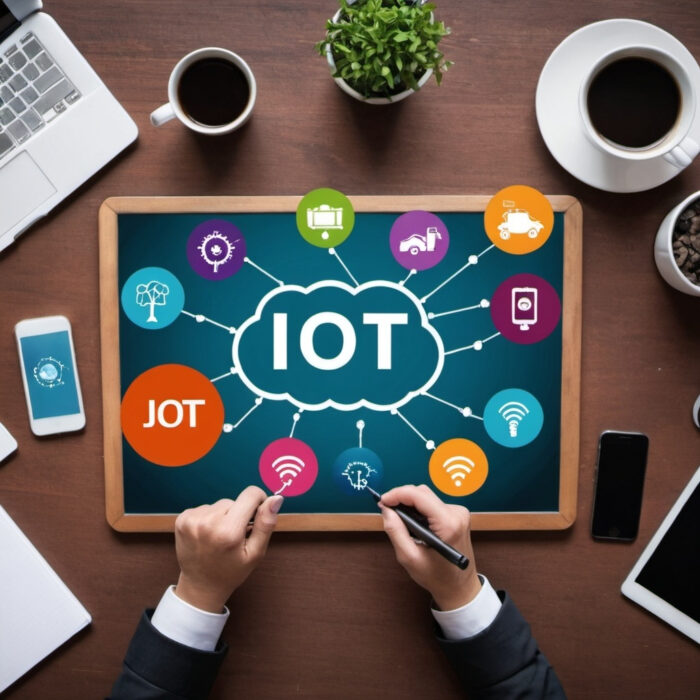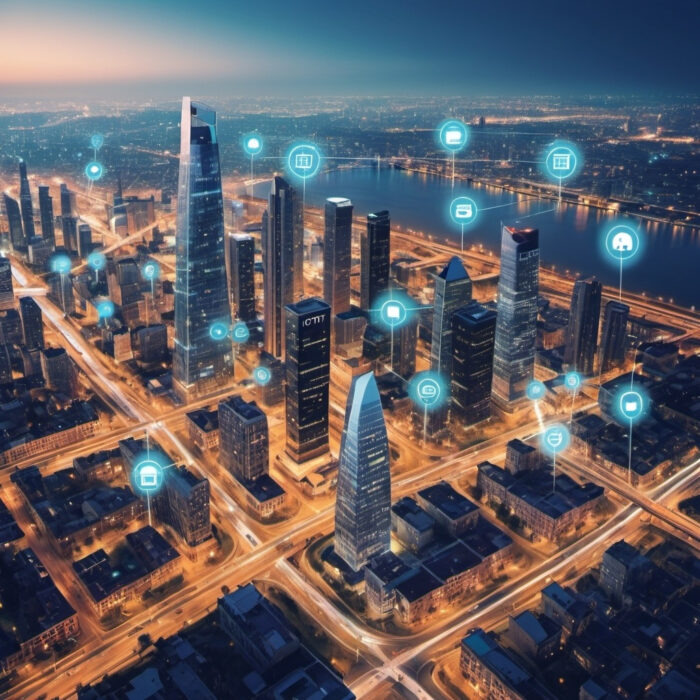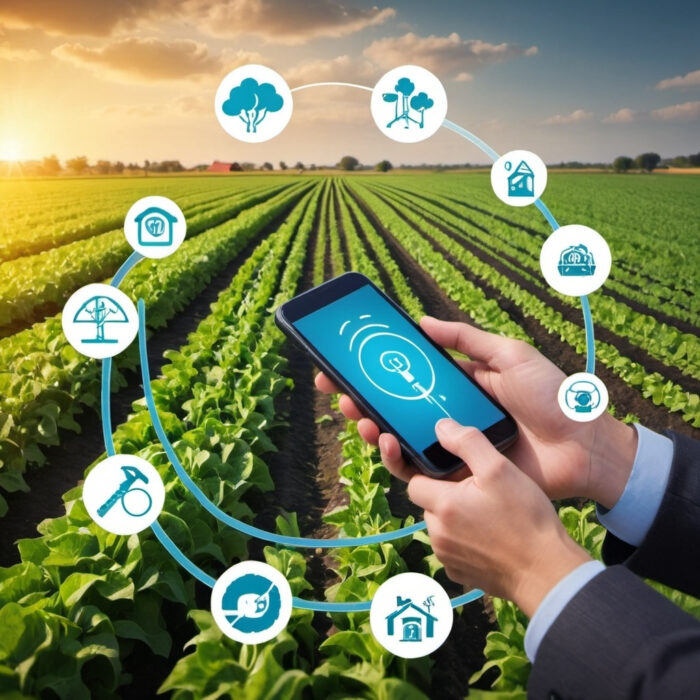LoRaWAN Market and Its Future
The Long Range Wide Area Network (LoRaWAN) market has experienced significant growth in recent years. LoRaWAN is a popular protocol for Low Power Wide Area Networks (LPWANs), enabling long-range communication between IoT devices with minimal power consumption. This technology is particularly well-suited for applications that require devices to operate on battery power for extended periods, such as smart metering, agriculture, smart cities, industrial IoT, and environmental monitoring.Current LoRaWAN Market Trends

Rapid Adoption in Smart Cities
Many municipalities are adopting LoRaWAN as part of current lorawan market trends for smart city applications, such as street lighting control, waste management, air quality monitoring, and parking management. The ability to deploy sensors with long battery life and wide coverage is a key advantage.

- Smart Street Lighting: LoRaWAN enables the remote monitoring and control of streetlights, allowing cities to adjust lighting based on time of day, weather conditions, or the presence of pedestrians. This leads to significant energy savings and reduced operational costs.
- Waste Management: Sensors connected via LoRaWAN can monitor the fill levels of waste bins and optimize collection routes. This reduces fuel consumption, minimizes traffic congestion, and ensures cleaner urban environments.
- Air Quality Monitoring: Cities can deploy LoRaWAN-enabled sensors to monitor air quality in real-time, providing data that can be used to issue health advisories, identify pollution sources, and guide environmental policies.
- Parking Management: LoRaWAN can be used to monitor the availability of parking spaces, providing real-time information to drivers via mobile apps. This reduces the time spent searching for parking, alleviates traffic congestion, and improves the overall driving experience.
- Water Management: LoRaWAN-enabled sensors can monitor water quality, detect leaks, and manage irrigation systems. This ensures efficient water usage, prevents wastage, and supports sustainability initiatives.
- Smart Buildings: LoRaWAN can be used to connect various building systems, such as HVAC, lighting, and security. This allows for centralized monitoring and control, leading to improved energy efficiency and building management.
Growth of the lorawan market in industrial IoT
Industries such as manufacturing, oil and gas, and logistics are increasingly leveraging LoRaWAN to monitor equipment, track assets, and enhance operational efficiency. LoRaWAN’s ability to operate in harsh environments makes it ideal for industrial applications.

- Manufacturing: In the manufacturing sector, LoRaWAN is used to monitor machinery, track inventory, and manage energy usage. It enables manufacturers to optimize production processes, reduce downtime, and enhance overall efficiency.
- Oil and Gas: The oil and gas industry uses LoRaWAN for remote monitoring of pipelines, wellheads, and other critical infrastructure. This enables early detection of leaks, equipment failures, and other issues, improving safety and reducing environmental impact.
- Mining: In the mining industry, LoRaWAN is deployed for monitoring equipment, tracking the movement of ore, and ensuring worker safety in underground and open-pit mines. Its long-range capabilities are particularly valuable in remote mining sites.
- Agriculture: LoRaWAN is used in precision agriculture to monitor soil moisture, weather conditions, and crop health. This data allows farmers to optimize irrigation, reduce water usage, and increase crop yields.
- Logistics and Supply Chain: The logistics sector uses LoRaWAN to track the movement of goods, monitor the condition of shipments, and manage warehouse operations. This helps reduce delays, prevent losses, and improve customer satisfaction.
Agricultural Innovations
The agricultural sector is utilizing LoRaWAN as part of the growing lorawan market to optimize irrigation systems, monitor soil health, and track livestock. This technology helps farmers make data-driven decisions, improving crop yields and resource management.

- Soil Moisture Monitoring: LoRaWAN-enabled sensors are used to monitor soil moisture levels in real-time. This data helps farmers optimize irrigation schedules, ensuring that crops receive the right amount of water at the right time, which improves yields and conserves water.
- Climate and Weather Monitoring: Farmers can deploy weather stations with LoRaWAN sensors to monitor local climate conditions, including temperature, humidity, and rainfall. This information is crucial for making informed decisions about planting, harvesting, and protecting crops from adverse weather conditions.
- Livestock Tracking and Health Monitoring: LoRaWAN is used to track the location and monitor the health of livestock, such as cattle and sheep. Sensors can monitor vital signs, detect movement patterns, and alert farmers to any signs of illness or distress, improving animal welfare and productivity.
- Pest and Disease Detection: LoRaWAN-based sensors can detect the presence of pests or early signs of crop diseases. This enables farmers to take proactive measures, such as targeted pesticide application, reducing crop loss and minimizing the use of chemicals.
- Precision Fertilization: By monitoring soil nutrient levels, LoRaWAN sensors help farmers apply fertilizers more precisely, ensuring that crops receive the necessary nutrients while avoiding over-fertilization, which can harm the environment and waste resources.
- Smart Irrigation Systems: LoRaWAN enables the automation of irrigation systems, allowing them to be controlled remotely based on real-time data from soil moisture sensors and weather forecasts. This reduces water usage and ensures optimal growing conditions for crops.
Asset and Equipment Tracking
Farmers can use LoRaWAN to track the location and status of farm equipment, vehicles, and other assets. This enhances operational efficiency by reducing equipment downtime and preventing theft.- Construction Sites: Construction companies use LoRaWAN to track the location and status of equipment, such as bulldozers, cranes, and tools. This helps prevent theft, reduces idle time, and ensures that equipment is available when and where it’s needed, improving project timelines and reducing costs.
- Logistics and Supply Chain Management: LoRaWAN is used to monitor the movement of goods and assets throughout the supply chain, from warehouses to transportation vehicles. This provides real-time visibility into inventory levels, reduces the risk of loss or theft, and improves logistics efficiency.
- Agriculture: Farmers deploy LoRaWAN-enabled trackers on machinery, vehicles, and livestock to monitor their location and usage. This helps optimize equipment utilization, reduce fuel consumption, and protect valuable assets from theft or misplacement.
- Manufacturing: In manufacturing facilities, LoRaWAN can be used to track the movement of raw materials, finished goods, and production equipment. This ensures that materials are available when needed, reduces downtime, and improves overall operational efficiency.
- Mining: The mining industry uses LoRaWAN to track vehicles, heavy machinery, and other assets across large and often remote mining sites. This helps enhance operational safety, improve asset management, and reduce the likelihood of equipment loss or theft.
Energy and Utilities
LoRaWAN market in healthcare IoT is widely used in smart metering for water, gas, and electricity. Utilities can remotely monitor consumption, detect leaks, and manage resources more efficiently, reducing operational costs and improving service delivery

- Smart Metering: One of the most prominent applications of LoRaWAN in the energy sector is smart metering for electricity, gas, and water. LoRaWAN enables the remote reading of meters, providing utilities with real-time consumption data. This helps in accurate billing, reducing manual meter reading costs, and improving customer service by providing usage insights.
- Grid Monitoring and Management: LoRaWAN is used to monitor the condition of power grids, including transformers, substations, and power lines. Sensors can detect anomalies such as voltage fluctuations, equipment failures, and power outages. This enables utilities to respond quickly to issues, reducing downtime and improving the reliability of the power supply.
- Gas and Water Leak Detection: LoRaWAN-enabled sensors are deployed to detect leaks in gas pipelines and water distribution networks. Early detection of leaks prevents resource wastage, reduces the risk of accidents, and minimizes the environmental impact.
- Energy Management in Buildings: In commercial and residential buildings, LoRaWAN is used to monitor energy consumption, temperature, and occupancy. This data allows building managers to optimize energy use, reduce costs, and improve the comfort and safety of occupants.
- Renewable Energy Monitoring: LoRaWAN is used to monitor the performance of renewable energy installations, such as solar panels and wind turbines. Sensors provide real-time data on energy production, equipment health, and environmental conditions, enabling efficient management of renewable energy resources.
- Street Lighting Control: LoRaWAN enables the remote monitoring and control of street lighting systems. By adjusting lighting based on real-time data, such as traffic conditions and weather, cities can reduce energy consumption, extend the life of lighting fixtures, and improve public safety.
Healthcare Applications
The healthcare sector is beginning to explore LoRaWAN for applications such as remote patient monitoring, asset tracking within hospitals, and ensuring the integrity of the cold chain for pharmaceuticals.
- Remote Patient Monitoring: LoRaWAN is used to enable remote monitoring of patients with chronic conditions, such as diabetes, heart disease, and respiratory disorders. Wearable devices equipped with LoRaWAN sensors can track vital signs, such as heart rate, blood pressure, and oxygen levels, and transmit this data to healthcare providers in real-time. This allows for early detection of potential health issues and timely intervention, improving patient outcomes.
- Asset and Equipment Tracking: Hospitals and healthcare facilities use LoRaWAN to track the location and status of critical assets, such as medical equipment, wheelchairs, and infusion pumps. This helps ensure that equipment is available when needed, reduces the risk of loss or theft, and improves overall operational efficiency.
- Environmental Monitoring: LoRaWAN enables continuous monitoring of environmental conditions in healthcare facilities, such as temperature, humidity, and air quality. This is crucial for maintaining safe and sterile environments, particularly in areas such as operating rooms, laboratories, and pharmaceutical storage.
- Medication Management: LoRaWAN can be used to monitor medication storage conditions, ensuring that drugs are kept within the required temperature ranges. Additionally, smart pill dispensers equipped with LoRaWAN sensors can help ensure that patients take their medications as prescribed, reducing the risk of non-compliance and improving treatment outcomes.
- Elderly Care and Assisted Living: LoRaWAN plays a vital role in improving the quality of care for the elderly and individuals with disabilities. Wearable devices and sensors can monitor movement, detect falls, and track daily activities, allowing caregivers to provide timely assistance and support. In assisted living facilities, LoRaWAN can be used to monitor residents’ health and safety, ensuring that help is available when needed.
- Facility Management: Healthcare facilities use LoRaWAN to monitor and manage building systems, such as lighting, heating, ventilation, and air conditioning (HVAC). This helps optimize energy usage, reduce operational costs, and maintain a comfortable environment for patients and staff.
- Emergency Response and Disaster Management: In emergency situations, such as natural disasters or pandemics, LoRaWAN can be used to quickly deploy temporary networks for communication and data collection. This enables healthcare providers to coordinate response efforts, monitor patient conditions, and manage resources more effectively.
- Cost-Effectiveness: LoRaWAN’s use of unlicensed spectrum and its low power consumption contribute to reduced operational costs compared to other communication technologies.
- Long Range and Deep Penetration: LoRaWAN’s ability to provide long-range communication (up to 15-20 km in rural areas) and its capacity to penetrate obstacles and buildings make it highly versatile.
- Growing IoT Ecosystem: The expanding IoT ecosystem, with increasing numbers of connected devices, is driving demand for efficient, scalable, and reliable communication solutions like LoRaWAN.
- Standardization and Interoperability: The development of standardized protocols and the efforts of organizations such as the LoRa Alliance have improved interoperability, making it easier for companies to adopt LoRaWAN.
Future of lorawan market
- Expansion into New Markets: The LoRaWAN market expansion is expected to expand into new verticals and geographies. Emerging markets in Asia-Pacific, Latin America, and Africa present significant growth opportunities due to increasing IoT adoption.
- Advancements in Technology: Continued advancements in LoRaWAN technology, such as improved data rates, enhanced security features, and better network management tools, will drive further adoption.
- Integration with Other Technologies: The integration of LoRaWAN with other technologies, such as 5G, edge computing, and artificial intelligence, will unlock new capabilities and use cases, making IoT solutions more powerful and efficient.
- Sustainability and Green Initiatives: As sustainability becomes a priority for many organizations, LoRaWAN’s low power consumption and ability to support environmental monitoring and resource management will be key factors in its growth.
- Collaborative Ecosystem: The continued growth and collaboration within the LoRa Alliance and other industry groups will promote innovation, standardization, and the development of a robust LoRaWAN ecosystem.